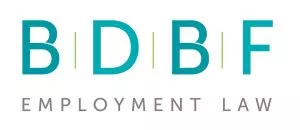On 6 April 2024, changes were made to the family-friendly legal framework to offer better protection for certain employees in redundancy situations, and to relax the rules surrounding the taking of paternity leave and requesting flexible working. To accompany these reforms, the EHRC has updated its guidance in this area.
The following changes were recently made to the family-friendly legal framework:
- Redundancies: in a redundancy situation, pregnant employees who notify their employer of their pregnancy on or after 6 April 2024 have priority for any suitable alternative vacancy that is available. Further, employees returning to work on or after 6 April 2024 from a period of maternity or adoption leave, or a period of shared parental leave lasting at least six consecutive weeks, have priority for any suitable alternative vacancy that is available. This protection will usually end 18 months after the date of the child's birth or the day the child is placed with the employee for adoption. You can read our detailed briefing on this reform here.
- Paternity leave: eligible employees may take statutory paternity leave as two separate blocks of one whole week if they wish. The period within which statutory paternity leave must be taken increased from 56 days to 52 weeks from the birth or adoption placement. The notification requirements were also relaxed, so that employees only need give four weeks' notice of a proposed period of leave. These new rules apply where the expected week of childbirth or adoption placement falls on or after 6 April 2024. You can read our detailed briefing on this reform here.
- Flexible working: the right to make a flexible working request became a Day 1 employment right. Various changes were also made to the flexible working request process, which make the process less onerous for employees. You can read our detailed briefing on this reform here.
The Equality and Human Rights Commission has updated its guidance for employers and employers to reflect these reforms. The updated guidance also provides worked examples of typical scenarios and highlights good practice. The three pieces of updated guidance are as follows:
Pregnancy and maternity: pregnancy
The guidance covers a wide range issues, from an employer's key obligations towards a pregnant employee, to pregnancy discrimination and dismissal and detrimental treatment during pregnancy. It also covers a variety of day-to-day HR issues including recruitment, performance management, health and safety matters and sickness absence.
As far the legal reforms affecting pregnant employees are concerned, the guidance keeps it simple. It states that pregnant employees must not be selected for redundancy based on criteria relating to their pregnancy and that pregnant employees should be treated the same as other employees being considered for redundancy, save that they now have a right to preferential treatment when it comes to suitable alternative vacancies.
Pregnancy, adoption and maternity: return to work
The guidance covers an employer's legal obligations to new parents returning to work after taking leave due to pregnancy, adoption or maternity. It covers matters such as sickness at the end of a period of leave, breastfeeding and health and safety upon returning to work, rights upon return, flexible working, redundancy and much more.
As far as the recent legal reforms are concerned, the guidance highlights that all employees have a legal right to request flexible working from Day 1 of their employment. This guidance does not cover the flexible working process itself but, instead, links to the new non-statutory Acas guidance on flexible working (discussed in our briefing here).
On redundancy, the guidance underlines that employers are able to lawfully make employees redundant following their return from maternity, adoption or shared parental leave, provided there is a genuine redundancy situation, and a fair and non-discriminatory process is followed. Reflecting the new rules, the guidance provides that employees who are pregnant or returning from maternity, adoption or shared parental leave (in addition to those who are on maternity, adoption or shared parental leave who already had this protection) have a right to preferential treatment when it comes to suitable alternative vacancies.
Unhelpfully, the guidance does not provide any worked examples on what employers should do in situations where multiple employees entitled to preferential treatment are vying for the same alternative role. In practice, we think that in this situation, employers will need to go through another scoring exercise to decide which employee should be offered the alternative role.
Maternity, paternity, adoption or shared parental leave and pay
This guidance summarises the key obligations for employers and considers the different types of leave and pay entitlements, miscarriage, stillbirth and death, premature birth, sickness, KIT days and more.
On redundancy, the guidance reminds employers that employees who are pregnant or on maternity, adoption or shared parental leave have priority for suitable alterative vacancies. It states that if an employer fails to offer such a vacancy to such an employee, any subsequent redundancy dismissal may be automatically unfair. The guidance highlights that in this situation the employee does not have to attend interviews or selection procedures for the vacant post – this is because the employee may be disadvantaged in a competitive process due to their circumstances . However, as noted above, the guidance does not address the scenario where an employer has multiple protected employees vying for the same alternative role.
On paternity leave, the guidance summarises the right to leave as it now stands following the 6 April reforms, save that at the time of writing this article the guidance still referred to the need for the leave to be taken within 56 days of the birth or adoption. This is an error; as stated above, the leave may be taken within 52 weeks of the birth or adoption.
EHRC Guidance – Pregnancy and maternity: pregnancy
EHRC Guidance – Pregnancy, adoption and maternity: return to work
EHRC Guidance – Maternity, paternity, adoption or shared parental leave and pay
The content of this article is intended to provide a general guide to the subject matter. Specialist advice should be sought about your specific circumstances.

